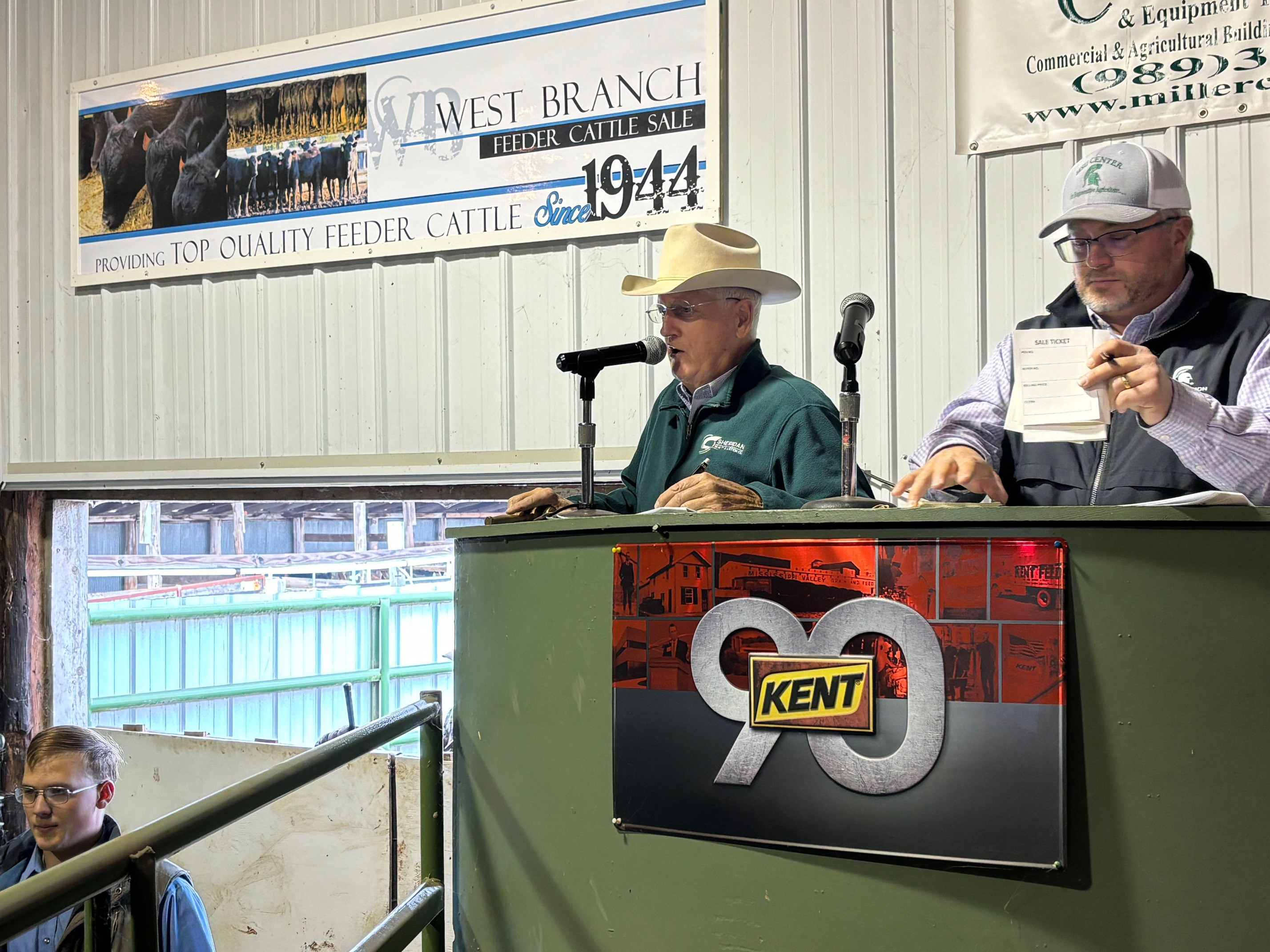The sale of the decade
Auctions are about price discovery, and a recent feeder calf auction in West Branch discovered just that.

Though it was the site of a big money sale on Tuesday, October 24, West Branch wasn’t filled with luxury vehicles. In fact, it was a sale of more than $1 million, and still there was no extra police protection or parade of armored vehicles. It wasn’t the Hope Diamond that sold in West Branch on that day, but it did represent the hopes of many beef producers.
On that day, the West Branch Feeder Calf Sale was held. Cattle producers brought beef calves in from throughout the area which were purchased by buyers and producers from around the state and even out-of-state. When the final gavel came down, 832 beef calves from 26 cow-calf farms had been sold with the total topping the million-dollar mark.
This sale has been held annually since 1942 by the West Branch Feeder Cattle Association, a voluntary association of cattle producers who work together to market their calves. Cow-calf producers from NE Michigan counties (Alcona, Arenac, Iosco, Ogemaw, Oscoda and Presque Isle) who sold at this sale, own beef cow herds that were bred last summer to calve in the spring (February - May), after a 9-month gestation. They have raised those calves, weaned them (30-60 days), and prepared them for the next stage of life.

Calves are sold by pens of from 1-14 head. Consistency within a group is desired. As Bill Sheridan, of Sheridan Auctions, sold the cattle, buyers bid on a price per pound for all the cattle in the pen. This year, steers weighing 500-549 lbs. sold for an average of $2.66/lb. Buyers will typically add these cattle, most of them weighing 450-650 lbs., to feedlots or to put them on their farm to raise until they are ready for a feedlot.
While it was a generally a good payday for these beef cow-calf producers, calf production is by no means a “get rich quick” business. Year after year, whether feed prices are high or low, whether cattle prices are high or low, cow-calf producers care for their herds, working to keep them healthy, comfortable and growing.
Cattle sold in this sale are all double-vaccinated to protect them from sickness as they are transported and in some cases, mixed with other cattle. By weaning them a minimum of 30 days before the sale, calves are accustomed to being apart from the cows. This is evident by the silence rather than vocalization from the pens. These calves will do well moving to another location and growing there right away. Most of the cattle came from farmers who have earned Beef Quality Assurance (BQA) certification.
This year’s sale had average prices that were higher than last year’s by $0.62/lb. for steers. What impacts the price per pound at which cattle are sold? First and foremost, it is market conditions primarily nationwide. Drought in western states last year resulted in more cows being sent to market and therefore a smaller calf crop this year. Farmers here have no control over national trends in the availability of cattle and the demand for cattle.
There are things they do have control over that affect the market in small, yet significant ways. Buyers want consistent groups of cattle that will do well in the next stage and location. The extra efforts these farmers do to vaccinate and early wean calves are rewarded with stronger bids because buyers know that they will not lose calves are even growth rates as cattle are relocated.
In addition, the bulls used, management information about calves and even certification of calf age and source are all factors that some buyers are looking for that will enable cattle to be sold internationally.
Price per pound is one way to look at the sale, but another is to look at the price per head. That of course is the simple math of how much the animal weighs multiplied by the price per pound. Animal weight is a function of birthday, therefore, how many days on feed the calves are before sale day, and the growth rate that is determined by a number of factors including how much milk the cow produces, the quality of feed available, the health of both cow and calf and the genetics.
Then on sale day, it comes down to buyers bidding. In an auction, prices go up as buyers compete for the sale. Some buyers come looking for a certain size and number of cattle. Some are buying for others with similar constraints. If they have a semi lined up to haul the cattle, they may want to buy enough to fill it, then stop buying. The more bidders bidding, the higher the prices.
Sale day is a day of price discovery; what are these cattle worth today. While the prices at other sales are monitored in the days before a sale, prices on the day of sale may be up or down. That price discovery is why auction of cattle is both fun to watch and sometimes frustrating to sellers.
This was the 79th annual sale at the West Branch Stockyards. More cattle sold through the ring this year than at any time since the 69th Annual Sale in 2013. Calf production is an important agricultural business in this area. It primarily uses land that would not be good for field crop production and produces marketable beef from it. That beef is a high protein food enjoyed by many.



 Print
Print Email
Email